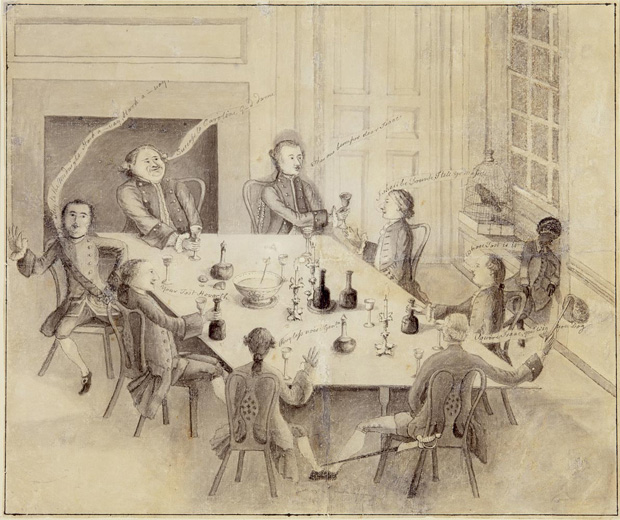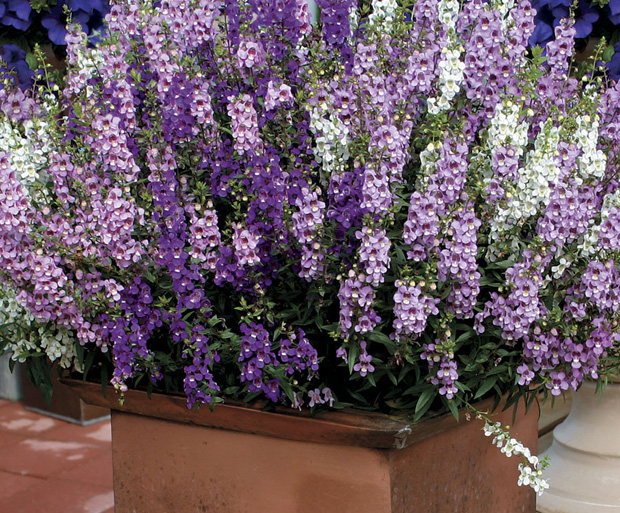Buzz of the Busy Gentry
05 Jul 2018
Set up your camp fires and gather ’round for a tale of the summer migrations of the Charleston Elite
By SUZANNA SMITH MILES

The year was 1754 and young Peter Manigault was in London, writing a letter to his mother, Anne, in Charles Town.
“Where do you think I am? At the Carolina Coffee House, smoaked to death with Tobacco, between two very greasy old Gentlemen who perhaps are at this Moment looking at what I am writing.”
The smoky Carolina Coffee House on Birchin Lane was the home-away-from-home for Charlestonians traveling in England—where folks conducted business, mailed and received letters, and caught up on the news from home. Manigault had graduated from Oxford and like most wealthy young men of the South Carolina elite, had just returned to London after taking the requisite “grand tour” of the European continent. He had prowled the museums of Paris, climbed Alps, and explored the ruins of Rome. He was well traveled but now he yearned for home.
“People ask me how I can leave dear London?” he wrote his mother. “My Answer is that I am no proud Man, & Carolina is good enough for me. Don’t be surprised at this incoherent Letter, for ’tis not very easy to write in the Midst of Tobacco Smoak, & an eternal Buzz of Busy Gentry.”
It has been over 260 years since Manigault penned that letter, yet Charleston’s busy gentry are still very much a-buzz. In time-honored tradition, they hop planes, board ships, and head for the mountains or their favorite beach in an annual summer migration as historically “Charleston” and as timely as St. Michael’s bells.
This yearly exodus began not so much from an urge for new experiences as from necessity—the gentry were not the only things buzzing with the arrival of warm weather. Clouds of hatchling mosquitoes drove people from their plantations and these pesky creatures brought more than red welts to the skin. They carried the quaintly termed “country fevers”—malaria and yellow fever—which meant that staying on the plantation for the summer, referred to as the “sickly season,” could literally mean catching your death.
As for staying in town? It was simply too hot to remain in Charleston during midsummer. Unlike mad dogs and Englishmen, astute Charlestonians fled the noonday sun of the torrid Charleston summer as soon as possible.
In April 1817, a French nobleman with the rather unwieldy name of Baron Barthelémi Sernin Du Moultin de la Barthelle de Montlezun came to town. From his writings he appeared to be a bit of a snob. The Charleston of 1817 seemed provincial to Baron de Montlezun and he was unimpressed. "The Exchange is insignificant," he snubbed, disparaging the beautiful Exchange & Custom House at the foot of Broad Street on East Bay. "Beautiful women are rare,” he said insultingly, adding, “but you see some very pretty girls."
He treated Sullivan's Island with particular disdain, writing that it held “but a dozen houses at sea level, on sands whose whiteness hurts the eyes, without there being one single tree in whose shade one might relax." As for the heat, he was adamant: “One would do a fine piece of business if one could exchange the clouds of dust for a little bit of shade, which would be a splendid substitution."
The Baron de Montlezun had a point. Lowcountry summers were difficult. Thus the buzzing elite left, en masse, for more salubrious climes.
They “resorted” to the beaches of Sullivan’s Island, Pawley’s Island and Edingsville near Edisto. They built cabins in the piney woods and humorously gave their tiny summering compounds elaborate names like Pinopolis, Pineville and Summerville. So many escaped to the coolness of the North Carolina mountains that Flat Rock became known as the “Little Charleston of the Mountains.” Others, like Peter Manigault and his wealthy friends, boarded sailing ships and crossed the Big Water to Europe.
They tried not to return until the mosquitoes were gone. “It was considered unsafe to [return] to the plantations before there had been two or three frosts,” wrote Charlestonian and Sullivan’s Island summer resident William Hasell Wilson in the 1830s. “The owners with their families rarely ventured there before the middle of November, and generally left about the middle of May.”
In 1840, Englishman George Lewis wrote much the same thing but far more forcefully. “As the summer advances… [the woods] become to the stranger as the valley and shadow of death. The environs of Charleston are so unhealthy at these seasons, that the traveler who sleeps there but for one night a mile out of town, is almost sure to be attacked by the country fever….”
And so, you fled. Or died. It wasn’t much of debate, at least not for those who had the means.
Leaving home for six months required far more than packing a few bags. For some it meant moving the entire household, which included the cow, pig, laying hens and piano in the parlor. It took an army of servants to accomplish the task and, in some cases, the servants made the move as well. As one plantation mistress replied when she was asked why she took her entire household staff to their summer island residence near Georgetown, “We cannot possibly separate husband and wife for six months; so Harry, the coachmen, has to have his wife and children, and the same with the cook, and the butler, and the laundress. We have to take fifty individuals with us in the move, I mean children and all."
Eventually, with changing times, the moving from town to summering place became a less elaborate event. Yet well into the 20th century, long after the eradication of yellow fever and malaria and the introduction of air conditioning—“old” Charleston families still migrated away each summer.
Perhaps, like an innate affinity for grits, this migration is in the native Charlestonian’s bloodstream. Maybe it is genetic memory. In all probability, it’s because it just makes sense. It’s still hot as Hades on Broad Street in mid-July. Come summer, the busy gentry of Charleston get buzzing and head to more salubrious climes.












